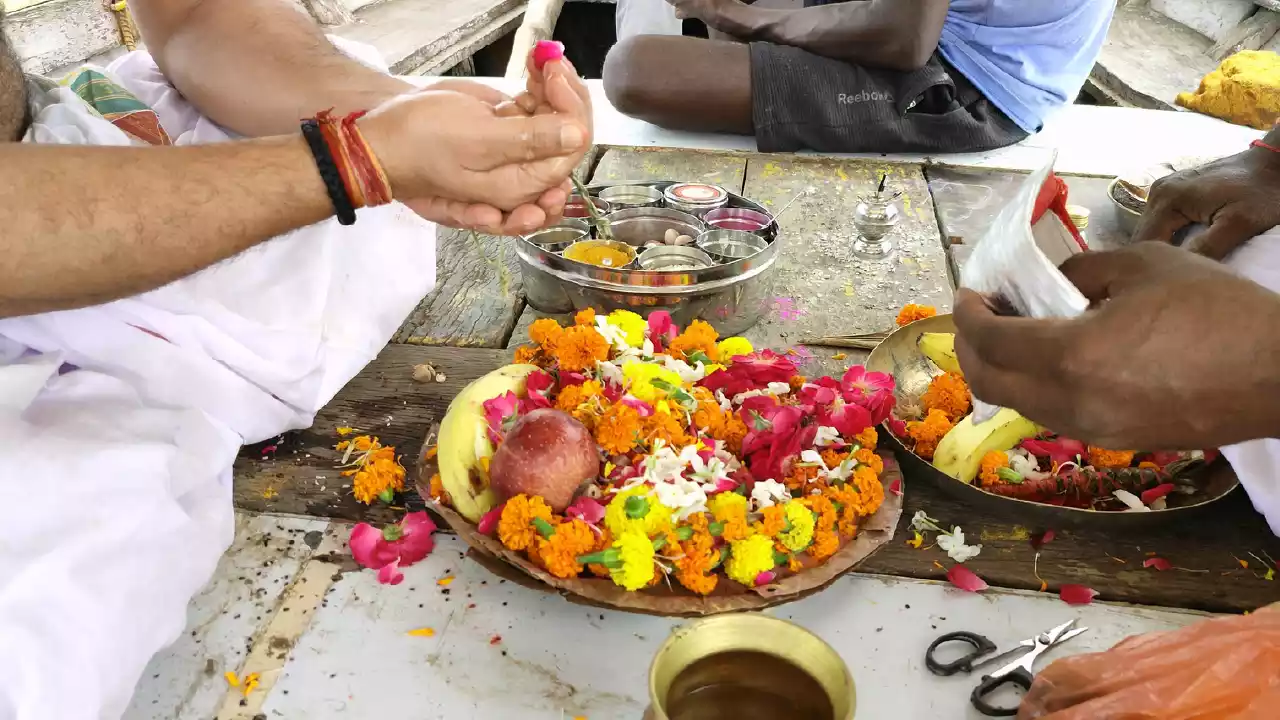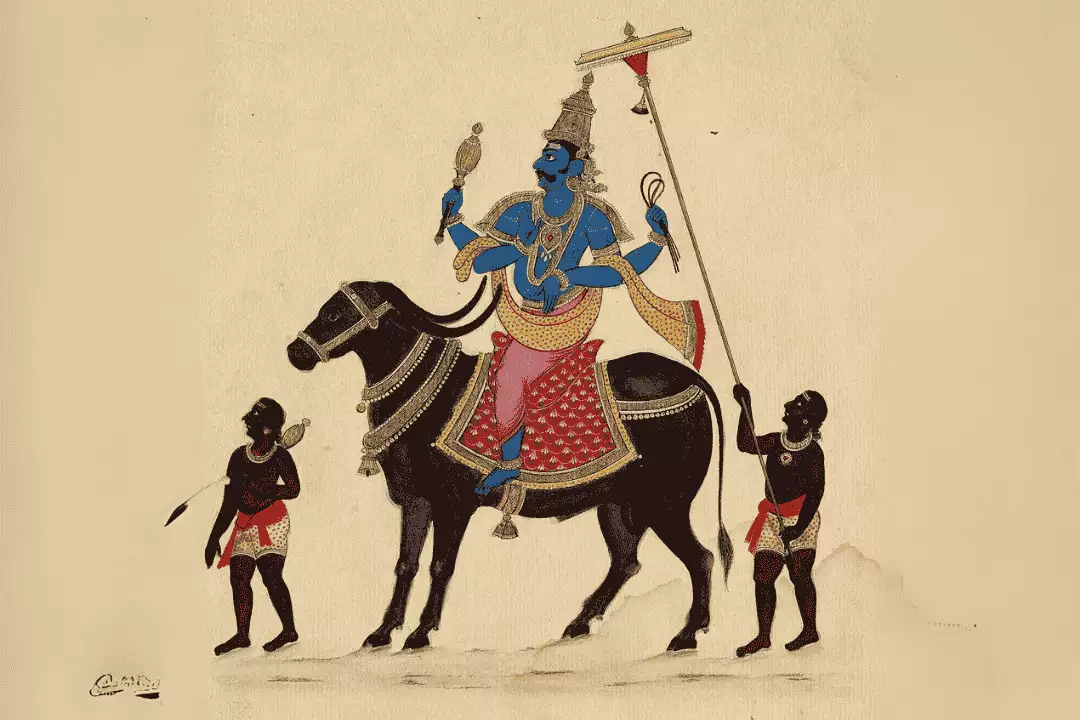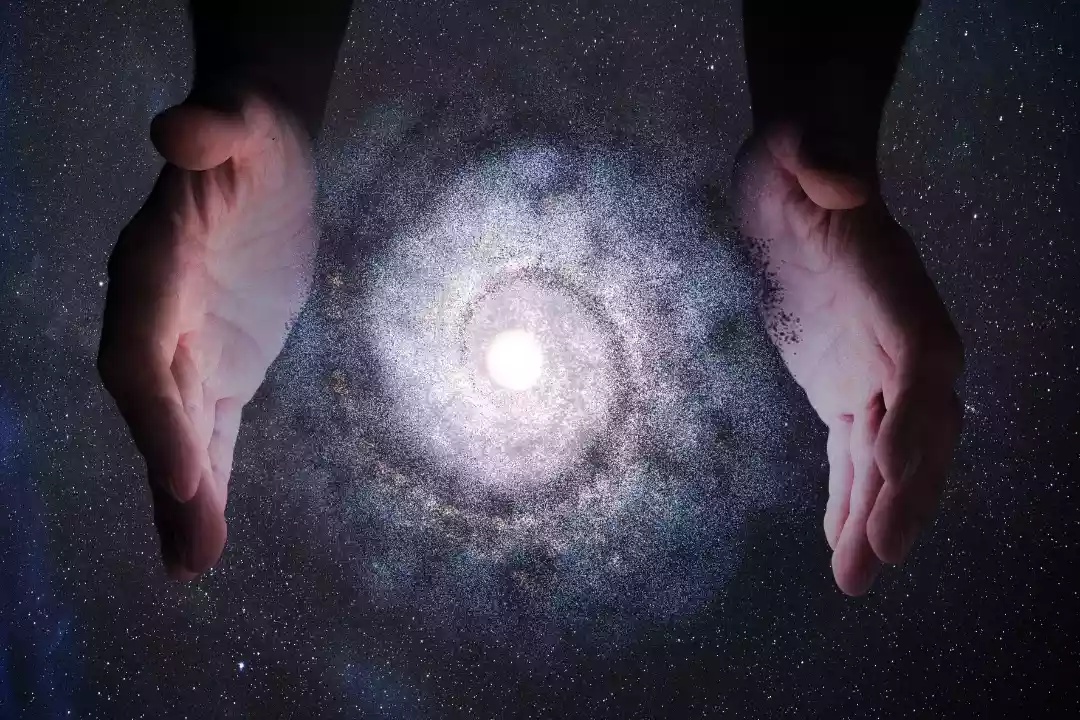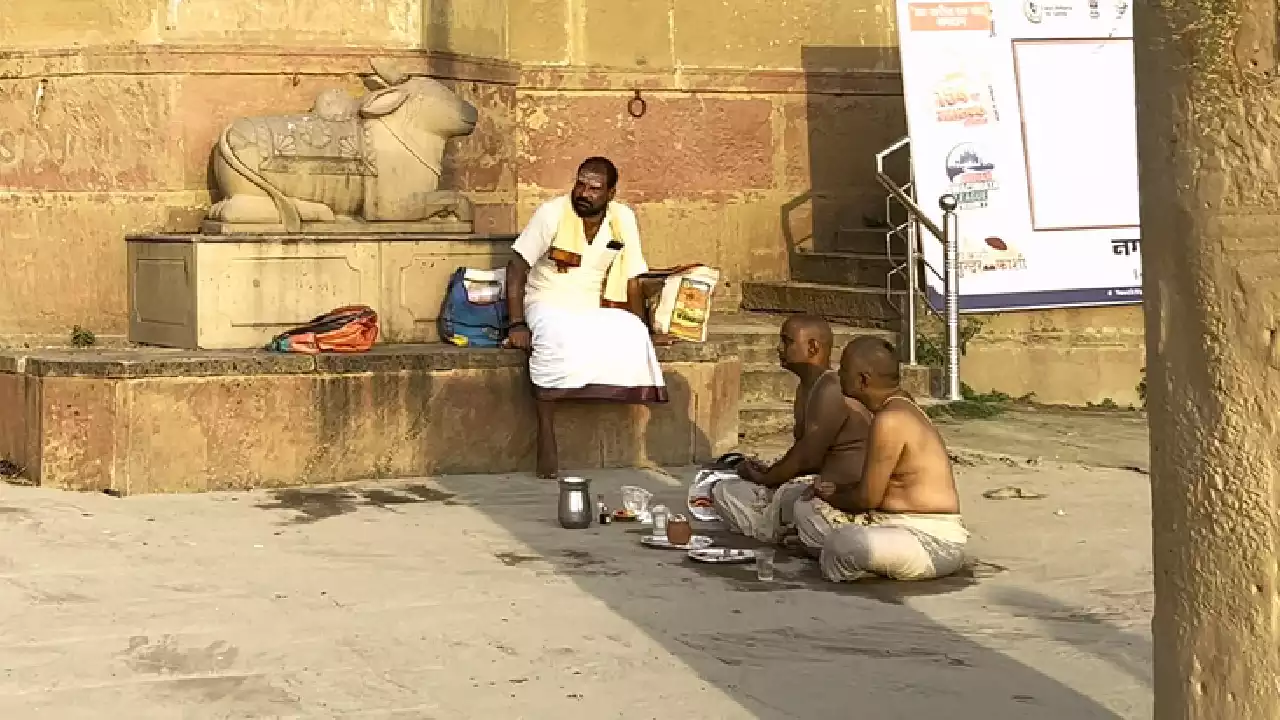ॐ श्री चित्रगुप्ताय नमः | ॐ यमाय धर्मराजाय नमः |
Namaste,
The Realm of Ancestors. Where is this place spoken of in our scriptures? Who resides there? What is its nature? Understanding Pitru Loka is like understanding the destination of the offerings we make during Pitrupaksha; it gives profound context to our rituals and deepens our connection to those who have journeyed beyond our sight.

What is Pitru Loka Explained? Defining the Ancestral Abode
In the vast and intricate cosmology of Hinduism, which describes numerous Lokas or planes of existence, Pitru Loka holds a unique and significant position. It is specifically designated as the realm or world inhabited by the spirits of departed ancestors (Pitrus) after they leave their physical bodies (sthula sharira) on Earth (Bhuloka).
Think of it not as a final destination like Heaven or Hell in some other traditions, but more often as an intermediate station, a specific vibratory plane where souls reside for a period determined by their karma and the support they receive from their descendants, before moving on to their next phase – be it rebirth, liberation, or transition to other realms.
It is the primary destination for the Manushya Pitrus (our human ancestors – father, grandfather, great-grandfather, and their counterparts) whom we honour during Shraddha.
Where is Pitru Loka?: A Place in the Cosmic Order
Hindu cosmology describes a universe far more complex than just the physical world we perceive. While texts like the Puranas sometimes offer slightly varying descriptions, a general understanding places Pitru Loka within the broader cosmic structure:
- The Three Worlds (Trailokya): Often, the universe is broadly divided into Bhuloka (Earth), Bhuvar Loka (the atmospheric or intermediate space between Earth and the Sun), and Swarga Loka (Heaven, the celestial realm of the Devas, starting from the Sun upwards).
- Pitru Loka’s Position: Pitru Loka is frequently described as being located within Bhuvar Loka, the subtle atmospheric plane. Some traditions place it in the southern regions of the cosmos or specifically link it to the domain governed by Lord Yama.
- Beyond Earth, Before Heaven/Hell: It’s generally understood to be a realm distinct from and ‘above’ the gross physical plane of Earth, but ‘below’ or separate from the blissful heavens (Swarga Loka) attained by highly meritorious souls, and certainly distinct from the realms of intense suffering (Naraka Lokas).
- Connection to the Moon?: Some interpretations link Pitru Loka symbolically or energetically to the Moon (Chandra), particularly the waning phase (Krishna Paksha), which aligns with the timing of Pitrupaksha. The Moon in Vedic thought is often associated with nourishment, emotions, and the subtle body.
Key Takeaway: While its exact ‘GPS coordinates’ in a multi-dimensional universe are beyond our physical grasp, Pitru Loka is consistently portrayed as a subtle, intermediate realm specifically associated with the spirits of our departed ancestors, often linked to the southern direction and the intermediate space (Bhuvar Loka).
The Sovereign of the South: Lord Yama Dharmaraja

Pitru Loka is not a realm of chaos; it is governed with perfect justice by Lord Yama (यम), also known as Dharmaraja (धर्मराज) – the King of Dharma or Justice.
- Role of Yama: Lord Yama is one of the primary Devas, often depicted riding a buffalo, holding a mace (gada) and a noose (pasha). He is not merely a fearsome god of death but the impartial judge who oversees the transition of souls after death. He ensures that souls receive their due according to their karma.
- Maintaining Order: He governs Pitru Loka, ensuring its inhabitants reside according to their karmic eligibility and receive the offerings sent by descendants. His role is crucial in maintaining cosmic order related to life, death, and the afterlife.
- Chitragupta: Lord Yama is assisted by Chitragupta (चित्रगुप्त), the divine record-keeper who maintains the ‘Akashic records’ – the complete account of every soul’s thoughts, words, and deeds (karma). This record determines the soul’s journey after death, including its placement in Pitru Loka or other realms.
- Granting Passage (Pitrupaksha): As we’ve discussed, it is Lord Yama who is believed to grant special permission for the Pitrus to leave Pitru Loka and visit their descendants on Earth during the sacred fortnight of Pitrupaksha.
Understanding Yama’s role as Dharmaraja emphasizes that Pitru Loka operates under divine law and justice, not random chance.
Life of Souls in the Pitru Loka: The Subtle Existence
What is it like for the souls residing in Pitru Loka? Our scriptures and traditions offer insights into their state of being:
- Subtle Existence (Sukshma Sharira): Pitrus exist in their subtle bodies (sukshma sharira), which are composed of mind, intellect, ego, and subtle senses – not the gross physical elements. They retain their individual consciousness and memories.
- Experiencing Karma: Their experience within Pitru Loka is largely determined by the karma they accumulated during their earthly lives. Those with predominantly good karma might experience a relatively peaceful and comfortable stay, while those with mixed or negative karma might face more discomfort.
- Subtle Needs (Hunger & Thirst): As discussed previously, souls in Pitru Loka are believed to experience subtle forms of hunger and thirst. They lack the physical means to satisfy these needs themselves.
- Dependence on Descendants: Their primary source of sustenance and comfort comes from the Shraddha and Tarpan rituals performed by their living descendants. The subtle essence (sara) of the food, water, mantras, and devotional energy (bhava) offered reaches them, providing nourishment (tripti) and peace.
- Awareness of Descendants: Pitrus are generally believed to be aware of their descendants on Earth. They feel pleased and satisfied when remembered and honoured, and conversely, feel neglected and dissatisfied if forgotten. They are receptive to the thoughts and feelings directed towards them.
- Ability to Bless: Satisfied Pitrus have the capacity to bestow blessings (aashirvad or kripa) upon their descendants, influencing their well-being from the subtle realm.
Important Note: Pitru Loka is generally not depicted as a realm of eternal bliss like Swarga, nor one of intense punitive suffering like Naraka. It is an intermediate state where souls process their karma, receive ancestral offerings, and await their next transition. The quality of existence there varies greatly depending on the individual soul’s karma and the support received.
The Purpose of Pitru Loka: Why Does Pitru Loka Exist?

Pitru Loka serves several crucial functions within the soul’s journey through Samsara (the cycle of birth, death, and rebirth):
- Transition Zone: It acts as a transition zone for souls who have departed Earth but are not yet ready for immediate rebirth, liberation, or entry into higher celestial realms or lower suffering realms.
- Karmic Processing: It provides a space for the soul to begin processing the experiences and karmic imprints of its just-concluded life.
- Receiving Sustenance: It is the designated realm where ancestors can receive the vital subtle nourishment provided by their descendants through Shraddha, which they need for their comfort and progress.
- Maintaining Lineage Connection: It keeps the subtle energetic connection between the departed ancestors and their living lineage active.
- Awaiting Next Destination: Souls reside here while the conditions for their next birth (based on remaining karma) ripen, or while they potentially work towards higher states through the merit transferred by descendants or their own subtle efforts.
How Offerings made by us Reach Pitru Loka?
A common question is: how do physical offerings made on Earth reach the subtle beings in Pitru Loka? Hindu tradition explains this through several mechanisms:
- Agni (Fire God): Agni, the sacred fire, is revered as the messenger (havyavāhana) who carries offerings not only to the Devas but also, in specific rituals, helps convey the essence to the Pitrus.
- Mantras: The sacred vibrations of specific mantras chanted during Shraddha act as carriers, transforming the offerings’ subtle essence and directing it to the intended recipients.
- Vishwadevas: These are a group of deities often invoked during Shraddha. They act as divine facilitators, ensuring the offerings reach the correct ancestors and protecting the ritual space.
- Bhaav (Intention & Devotion): The sincere faith, love, and gratitude (bhaav) of the descendant infuse the offerings with potent energy that bridges the realms.
- Brahman Bhojan: Feeding qualified Brahmins during Shraddha is believed to be a conduit. The satisfaction of the Brahmin, representing the divine principle on Earth, translates into satisfaction for the ancestors. The Brahmins act as intermediaries through whom the Pitrus receive the nourishment.
- Subtle Essence (Sara): It’s not the gross physical food that reaches them, but its subtle essence or energy (sara), which nourishes their subtle bodies.
Not a Permanent Home: The Journey Beyond Pitru Loka
It’s essential to understand that for most souls, Pitru Loka is not an eternal residence. The duration of stay depends on various factors, primarily the soul’s karma and the support received. From Pitru Loka, the soul’s journey can proceed in several directions:
- Rebirth (Punarjanma): Most commonly, based on their remaining karma and attachments, souls take rebirth on Earth or other planes of existence in a form suitable to their karmic trajectory.
- Higher Realms (Swarga, etc.): Souls whose positive karma (punya) fully ripens, perhaps aided by the merit transferred through Shraddha, may ascend to higher, more blissful realms like Swarga Loka.
- Liberation (Moksha): In rare cases, a soul might attain sufficient purification and detachment, possibly aided by intense spiritual merit or the grace earned through descendants’ actions, to achieve liberation from the cycle of birth and death altogether.
- Lower Realms (Naraka): If the soul’s negative karma is predominant and outweighs the support received, it might transition from Pitru Loka (or even bypass it) to realms of suffering (Naraka Lokas) for purification before eventual rebirth.
The performance of Shraddha aims to make the Pitrus’ stay in Pitru Loka comfortable and, more importantly, facilitate their positive transition onwards, ideally towards higher realms or liberation.
Distinguishing Pitru Loka from Swarga, Naraka, and Moksha
To avoid confusion, let’s clarify the distinctions:
- Swarga Loka (Heaven): Realms of immense pleasure and enjoyment, earned through significant positive karma (punya). Residence here is temporary; when the merit is exhausted, the soul takes rebirth. It’s primarily for pleasure, not necessarily spiritual progress in the same way as human birth.
- Naraka Loka (Hell): Realms of intense suffering, experienced as a consequence of severe negative karma (paapa). The purpose is purification and expiation of sins, not eternal damnation. After the karmic sentence is served, the soul takes rebirth.
- Pitru Loka: An intermediate realm primarily for ancestors, sustained by offerings, focused on lineage connection, and serving as a transition point based on mixed karma.
- Moksha (Liberation): The ultimate goal – complete release from the cycle of birth and death (Samsara), merging with the ultimate reality (Brahman). This transcends all Lokas.
Conclusion: A Realm of Connection and Transition

Pitru Loka, Is thus a vital concept in understanding the Hindu map of existence beyond death. It is:
- The designated intermediate realm for departed ancestors.
- Governed by the just hand of Lord Yama Dharmaraja.
- Inhabited by souls in subtle bodies, dependent on descendants’ offerings (Shraddha).
- A place of transition, not usually a permanent abode.
- Crucially connected to Earth, especially during Pitrupaksha, when its inhabitants are believed to visit.
Understanding Pitru Loka gives depth and meaning to our Pitrupaksha rituals. We are not just performing empty customs; we are actively participating in the cosmic order, sending sustenance and loving energy to a specific realm where our ancestors reside, aiding their peace and progress, and fulfilling our sacred duty (Pitru Rina). It underscores the profound, unbroken connection that exists between generations, visible and invisible.
May this knowledge illuminate your understanding as you honour your own revered Pitrus.
ॐ लोकाः समस्ताः सुखिनो भवन्तु |
